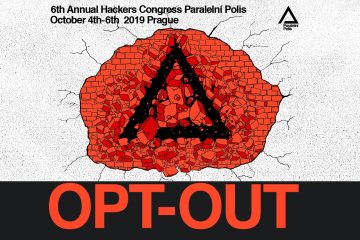Green cartel control of Bitcoin
Introduction
One day you wake up to a beautiful green day. There is a rainbow in the sky. You take in the beautiful view of the mountains, breathe in the fresh morning air. You look at your mobile phone. Bitcoin has surpassed half a million dollars. You can’t believe your eyes. You open your social networks and everyone cheers – Bitcoin has reached 100% green energy. Not a milligram of unnecessary carbon dioxide in the atmosphere! Elon Musk and Michael Saylor are photographed with Greta Thunberg wearing t-shirts with the green Bitcoin logo at a solar power plant. Miners, investors, hodlers are happy. It worked!
But you will soon learn that you have woken up to a catastrophic scenario. Bitcoin has ceased to be decentralized – it has been taken over by a green, AML-friendly cartel that has enforced its own rules. The same thing happened to the other major cryptocurrencies.
How did it happen?

Step Zero: Bitcoin is made of smelly coal
This step has already taken place. Enviro activists will calculate how much “unnecessary” carbon dioxide mining cryptocurrencies will release into the atmosphere. Elon Musk will say that Bitcoin is mined from fossil fuels. Michael Saylor arrives on a white horse and arranges for Elon Musk to meet with miners from North America, and together they agree to mine Bitcoin using renewable energy. This isn’t news – Argo and DMG signed a memorandum a few months ago to mine cryptocurrencies exclusively from renewable sources. Terrapool is one of the first mining pools to mine officially eco-friendly green bitcoins. It should be noted that in addition to the “green” mining pools, there are already two mining pools (Blockseer and Mara Pool) that only mine blocks with clean transactions, meaning that they will never include a transaction in a block that has a transaction in its transaction history that originated from an address on the OFAC sanction list. For more on dystopian Bitcoin censorship scenarios, see Juraj Bednar’s “How the Government Can Quickly and Efficiently Censor Bitcoin – A Few Dystopian Visions” and Part II.
The goal of step zero is to show the world that it can be done – Bitcoin can be mined from renewable resources and it is technically possible to censor transactions and meet state and private anti-money laundering regulations.
Step One: Voluntary Certification
American miners are forming a non-profit organization, the Bitcoin Mining Council, to inform about the use of renewable energy to mine cryptocurrencies. The following scenario may continue with this organization or another organization may be formed for this purpose. The latter will be an independent professional association of (competing) miners. This association will start issuing certificates on whether miners use only renewable energy. In the past, a similar situation involved washing machine manufacturers who formed a cartel and pushed for energy certification to reduce energy and water consumption.
In the first phase, it was just a label on each washing machine. Gradually, washing machines that were not certified or were not energy efficient were no longer being sold. Consumers learned that ‘energy class A’ was best and that lower energy classes were worse and usually cheaper. At the same time, washing machines without ‘washing machine cartel’ energy certification stopped being sold. This was despite the fact that they could be fully functional and significantly cheaper than washing machines that had energy certification.
A similar situation may arise in the cryptocurrency market.
In the case of Bitcoin, the first output of this step may be a “green certificate” of the block. Miners associated with a mining organization will receive a “green mining certificate” if the relevant auditor verifies that they are mining renewable energy (hydro/solar). The certificate may even include a complete energy mix (e.g. solar during the day, hydro in the evening). This certificate will be issued for the addresses of the block reward. This applies to large mining companies that are not associated with mining pools.
Independent competing green energy mining pools (Terra pool is already one of them) are being created, where only miners who use renewable energy sources will be allowed. The association will also issue a green certificate for the mining pool, with a specific energy composition, and this will be updated progressively according to the composition of the energy sources used by the end miners.
Green certification can look like the OP_RETURN output of a coinbase transaction will contain the digital signature of the address to which the block reward is sent and it is valid only for a predefined range of blocks.
The result is a nice graph on the association’s website that will show the energy mix similar to what you see on your electricity bill. Miners who don’t use the green cartel will be marked as “unknown energy sources” (and discriminated against in the future).
Step Two: Bitcoin is only green
After the first step, the share of green energy will increase. Since certified energy will only be green, the share will increase as miners join the association and verify their energy sources.
At the same time, the association may at some point commit its members to voluntarily fight terrorism and money laundering. It is a simple filter on transactions originating from a sanctions list such as OFAC. This is helped by the fact that the association so far only brings together North American miners who would like to do business in the US and therefore do not want to put themselves at risk of participating in money laundering. As miners certified by the association, they will cease to be anonymous – they will become identified without any willingness to expose themselves to the risk of mining blocks from sanctioned transactions. Let the anonymous coal energy miners do the dirty work.
The aim of this “green activity” will be primarily to show (mainly institutional) investors that Bitcoin is enviro-friendly and the share of green energy is rising, as well as that it is possible to defend against money laundering. And thus improve the perception of Bitcoin and improve its “social” reputation. Elon Musk and a number of other environmental activists are happy to get behind Bitcoin if it does not want to publicly “burn coal”, i.e. use non-renewable energy to do so.
As the share of green energy will gradually increase, at some point, it will probably reach more than half of Bitcoin’s hash rate. From that point on, the association can realistically disconnect miners who use the bad dirty uncertified energy and show the world that Bitcoin can not only be green but also free of criminal suspicious transactions. After all, if someone creates a block that is not certified by the green association, they risk having their block discarded (not followed up on) by other miners.
This evolution will cause each entity to create a different story for each participant to justify it:
- Miners – as they shut out non-green competition, they “save the planet”. If there are 40% uncertified miners, for example, then these miners will just burn energy and receive no rewards from the mining.
- Ordinary people – green bitcoin is good because of environmental activism and green renewable energy
- Institutional investors – the stigma of a money laundering and planet-destroying tool will be replaced by a fully green stamped Bitcoin
- Regulator – Bitcoin can regulate “itself”, just like washing machine manufacturers, banks (FATF-GAFI), etc. have regulated themselves. It will be internationally safer as it will be plugged into an international network of private regulations to combat money laundering. Bitcoin will take the pressure off the police and other forces and will help fund the building of renewable energy.
- Individual Bitcoin users – for some users, green Bitcoin may be “more valuable”. Critics of Bitcoin are not only environmental activists, but also central banks. For example, the Bank of Canada defends its “central bank digital currency” by saying it’s like crypto, “only better” – because it’s “greener.” Bitcoin holders have long awaited the arrival of institutional investors – and green and “AML-friendly” Bitcoin opens the door to more institutional investors who had feared it for that very reason until now. For Bitcoin holders who mainly want to save and have “hard money,” green and clean Bitcoin may be more valuable. The 21 million Bitcoin limit may remain, but state agents have less reason to fight it.
Step Three: the end of decentralisation
The interchangeability (“fungibility”) of coins means that all coins are the same, they cannot be distinguished by, for example, having a different transaction history (the problem of non-fungibility of cryptocurrencies such as Bitcoin, Ethereum), and thus it is not possible to say that some coins are worse because they come from crime and some are better because they have just been mined and thus have not yet been used.
The ability to differentiate coins or blocks from others (no matter how) and to assign any attributes to them allows for the introduction of discriminatory rules. Since these rules are enforced by centralized authorities, the concept of decentralization itself is degraded, as one institution gets to decide which coins or blocks are ‘clean’ or ‘green’ and, conversely, which are ‘dirty’, from potential criminal activity, or ‘non-green from non-renewable resources.
Any attempts to introduce “green” or “AML-friendly” Bitcoin thus introduce not only an element of centralization (by the association, which will decide which miners are green and which are not) but also potential censorship (if green miners get a supermajority of the computing power, they may not accept and thus discard any blocks from miners who are not green).
Green, AML-friendly (or any other “colored”) Bitcoin is dangerous because it introduces an element of centralization, which can result in censorship and discrimination against miners as well as the transactions themselves.
The paradox remains that in the final analysis, it will not be the state behind a centralized, censored Bitcoin, but associations issuing “green” certifications to miners or maintaining sanction lists (such as OFAC) that can persuade the majority of miners to their side.
How to prevent this scenario
The first thing we can think of is to throw away any block that has a green certificate. That is before the association reaches a supermajority, orphan all blocks that have this green certificate. The key argument is the serious threat to Bitcoin decentralization. Apart from that this scenario is not viable in our opinion (who would want to boycott green blocks?), such a restriction is ineffective. The cartel may well be completely invisible and the certification of blocks may well be hidden from the world. Only the miner has the certificate and knows the certificates of the other miners as soon as their blocks are mined – and then only if they too are members of the association, i.e. the cartel. This means that nothing has to change for an outside observer. The association will only publish aggregate data on the share of green energy (and maybe not even that). Discarding blocks, which was described in the second step, can work similarly – a miner in a green cartel can find out if a previous block was also mined by someone in the cartel, but no one else knows whether to follow up.
Such a market structure for mining does not require that mining will be dominated by one particular entity. It can still be independent miners from different countries who have merely agreed together to shut out non-green competition. By shutting down the non-green competition, the miners will earn more in rewards, and at the same time in the Bitcoin increased value, because more institutional investors, who currently have a problem with its “non-greenness”, will probably then enter the green Bitcoin.
It is quite possible that most of the miners in the cartel will even believe they are doing a good thing.
Save the planet and make more money? Amazing!
Many of you will say that we need to immediately introduce anonymity, first-layer fungibility, or switch to an anonymous cryptocurrency like Monero. However, we will disappoint readers here – this dystopia is equally implementable on any blockchain. An anonymous cryptocurrency will only prevent censorship of transactions from the sanction list. It will not prevent the formation of a green cartel, as blocks can be certified as green just the same as with Bitcoin.
Will users prevent this scenario? For example, they will fork from green Bitcoin and use the original Bitcoin, right? However, this scenario is also unrealistic. Since the cartel will essentially introduce a soft fork, “green Bitcoin” is exactly the same as “original Bitcoin” from the point of view of the outside observer (i.e. full node). It’s the same Bitcoin as the one we know so far, with all the rules enforced by individual nodes and the biggest Proof of Work. The validation node can’t distinguish between green and non-green Bitcoin, it only cares about rule satisfaction and PoW length. Even in the case of a successful network split based on a censored transaction, for example, cartel members are able to come back and take control of the chain straight from the next block.
Is this scenario likely?
Given that we see the first steps unfolding before our eyes, we think so. Indeed, the push for green blocks and for censorship of sanctioned transactions is already under way. Elon Musk has shown that he can create demand for green Bitcoin. Mining pools that don’t include transactions from sanctioned lists or other miners that are not green in their blocks already exist.
It is interesting to note that many people have viewed the attacks on Bitcoin mainly from the perspective of regulators and countries. In reality, however, a great deal of regulation is created by market processes, by the cooperation of competing actors in the market. For example, the aforementioned green regulations on washing machines and other appliances came about in this way. In the same way, there are also regulations and standards to combat money laundering (FATF-GAFI) or transnational cooperation in tax areas (OECD, CRS international treaty), or various ISO standards (ISO 27001, ISO 9000). It is therefore essential, in addition to analyzing potential attacks by the state, to analyze the threats of market regulation, which in the long term favors popular themes such as ‘green energy’ or ‘clean money.

